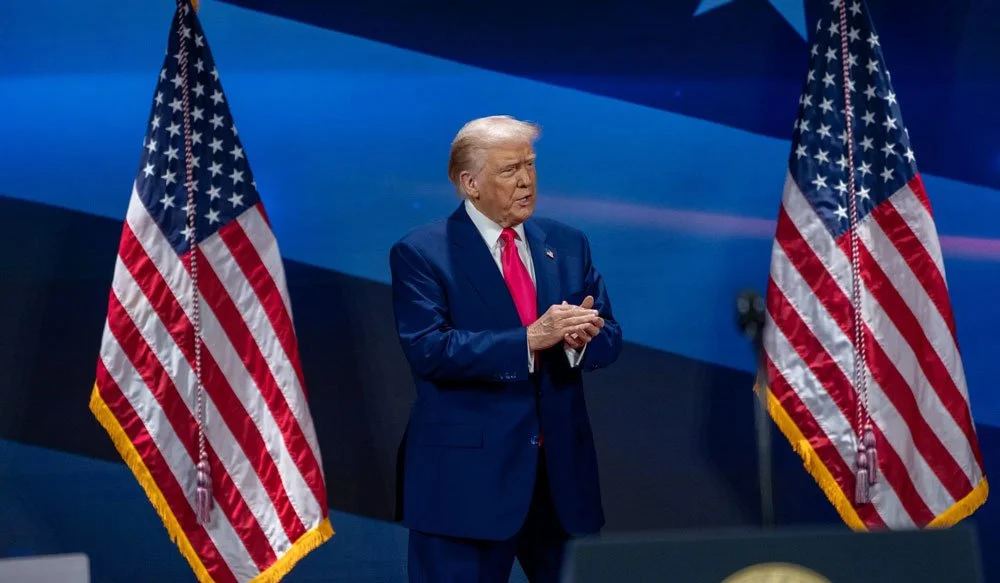Understanding the Rationality Behind Trump’s Tariff Decisions
The world has been shaken by the announcement of U.S. tariffs that targeted more than 90 countries, including its closest allies in the Indo-Pacific, such as South Korea, Taiwan, Japan, and others. Trump justified the decision as a response to the U.S. trade deficit, arguing that the country imports more than it exports. As a result, he announced that steel and aluminum products would be subject to a 50% tariff upon entering the U.S. market, copper to 50%, foreign cars and engines to 25%, and even threatened to impose a 200% tariff on pharmaceuticals. Through these measures, he aimed to boost the American economy by encouraging citizens to prioritize domestic products.
Critics have argued that Trump’s decision is irrational, as it contradicts policies that would typically benefit the U.S. Prominent business leaders and advisers are also against the policy. For example, Elon Musk, former Head of the US Department of Government Efficiency whom Trump once called “one of our great brains,” has made efforts to stop him from imposing tariffs. Tesla, Musk’s company, also publicly criticized Trump’s tariff policy, warning that such measures would harm U.S. exporters. They argued that in response to U.S. tariffs, other nations would impose higher tariffs on American electric vehicles, thereby disrupting the global market. Similarly, Gary Cohn, former Director of the National Economic Council of the United States, argues that Trump’s instruction for the companies to simply “eat” the tariffs is unfeasible because companies have responsibilities to their stakeholders and obligations to repay back debt; consequently, this burden will later be carried by the customers, thereby contributing to inflation.
If many experts and insiders agreed that tariffs were economically harmful, then why did Trump insist on pursuing them? To answer this, it is important to look at his personality and worldview. This article argues that there are two underlying logics behind this decision: first, his hawkish personality, which drives him to believe such actions are necessary; and second, his businessman mindset, which he sees as directly advancing the national interest of “America First.”
First, Trump is a hawkish leader who expresses personal attacks without hesitation and believes in the “Zero-Sum Game.” This perspective is evident in his criticism of NATO members for not contributing enough and his withdrawal from the Trans-Pacific Partnership in 2017. He perceives international trade as competitive arenas where one party’s gain is inherently another’s loss. This outlook also makes him deeply skeptical of other countries’ intentions where he suspects that allies and trading partners may try to take advantage of the U.S. From this viewpoint, tariffs become a logical tool: they allow him to protect the U.S. from “cheaters,” ensuring that America maintains an advantage in global exchanges. Therefore, his zero-sum mindset directly informs his willingness to impose aggressive trade measures, which he considered an important priority.
While his hawkish traits shape his perception of global competition, making him quick to impose tariffs, his business background reinforces his strong belief in using tariffs as a trade policy tool. Trump is a businessman and has held the mindset since the 1980s that tariffs could solve economic problems. He even confirmed this view by calling himself a “tariff man” in 2018. Trump’s reasoning stems from the idea that his main obligation is to defend the well-being and safety of Americans, rather than serving the needs of European states or allied nations. Trump believes this approach works because (1) high tariffs make imported products more expensive, which creates a strong incentive to boost local manufacturing and provide jobs for Americans and (2) in the long term, he believes that instead of importing goods into the U.S., it is better for foreign companies to open factories domestically. This belief is also validated by evidence from 2018-2019, when tariffs on imported washing machines reportedly created around 1,800 new U.S. jobs. As a result, tariffs became the approach he saw as best to materialize the “America First” agenda.
However, the author notes that while tariffs can incentivize domestic production, Trump also needed to empower U.S. industries to produce their own goods. The Federal Reserve reported that American manufacturers faced higher costs for imported raw materials, compounded by retaliatory tariffs from other countries. Additionally, to attract foreign companies to relocate to the U.S., he would need to offer incentives such as tax breaks and lower labor costs, similar to strategies employed by Vietnam. Over the past two decades, many firms have shifted production to countries with cheaper costs, like Vietnam, highlighting the importance of carefully evaluating global competitors before expecting companies to move operations back to the U.S. This highlights both the potential and limitation of Trump’s tariff strategy: while politically aligned with his “America First” agenda, its long-term economic viability remains contested.


